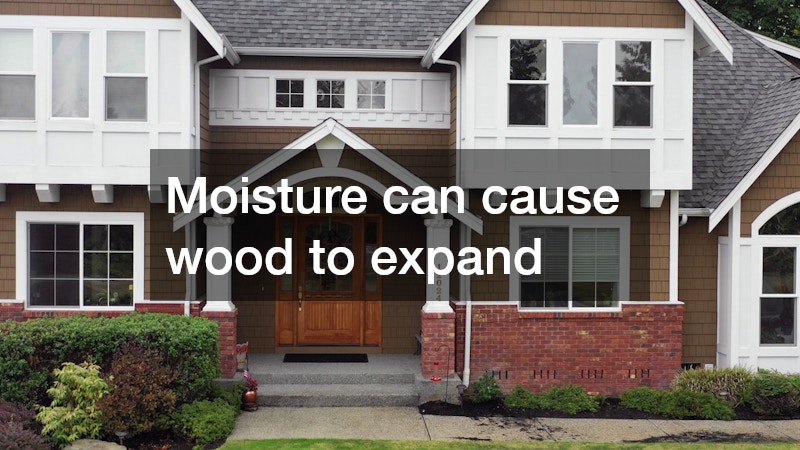In today’s ever-evolving architectural landscape, door upgrades play a crucial role in enhancing both functionality and aesthetics. As you embark on this journey, it’s imperative to consider several factors to ensure a seamless and rewarding experience. This article will guide you through the vital questions you should ponder before upgrading your doors and navigating the door business with confidence.
What Are the Latest Trends in Door Design?
In recent years, the door business has witnessed a surge in innovative designs that seamlessly blend form and function. Among the most popular trends is the rise of minimalist styles, which focus on simplicity and clean lines.
These designs often incorporate natural materials like wood and glass, creating an elegant yet understated aesthetic that appeals to modern sensibilities. The emphasis on minimalism is not merely about reducing visual clutter but also about highlighting the inherent beauty of the materials themselves.
Additionally, smart technology has made significant strides in the realm of door design. Homeowners and businesses alike are increasingly incorporating smart locks, which enhance security without compromising design. These locks often come with features such as fingerprint recognition, virtual keys via smartphone apps, and integration with home automation systems. The integration of technology has not only transformed how we interact with our doors but also increased the overall security and convenience of our spaces.
Eco-friendly and sustainable materials are another trend gaining traction. As environmental concerns grow, manufacturers are turning to sustainable sources and eco-conscious production methods. Doors made from reclaimed wood, bamboo, and other sustainable materials not only have a reduced environmental impact but also offer distinctive textures and grains that add character to any space. This trend underscores the growing desire among consumers to make environmentally responsible choices while enhancing the aesthetic appeal of their homes or offices, a shift that many in the door business are eager to embrace.
How to Choose the Right Materials for Your Climate?
Selecting the appropriate materials for your doors is a critical step in ensuring their durability and performance, particularly in response to local climate conditions. In areas with extreme temperatures, materials that can withstand heat, cold, or moisture are invaluable. For instance, fiberglass doors are a popular choice for their thermal insulation properties, making them suitable for both hot and cold climates. Unlike wood, fiberglass does not warp or crack easily, ensuring longevity and reducing maintenance costs.
Wooden doors, while aesthetically pleasing, may not be ideal for regions with high humidity. Moisture can cause wood to expand, leading to warping or cracking over time. However, in drier climates, wooden doors can be an excellent choice when properly treated with sealants to prevent moisture penetration. Additionally, advancements in wood treatment have made it possible to maintain the rustic charm of wooden doors without compromising their resilience against the elements. Professionals in the door business often recommend choosing materials tailored to specific environmental conditions to maximize performance.
For those living in coastal areas or locations with high salt content in the air, corrosion-resistant materials such as steel or aluminum are advisable. These materials are not only robust and secure but also require minimal upkeep, making them a cost-effective option in the long run. Furthermore, the choice of material can significantly impact energy efficiency, as certain materials offer better insulation, reducing energy consumption for heating or cooling and thereby lowering utility bills.
What Are the Cost Implications of Upgrading Your Doors?
The financial aspects of upgrading your doors cannot be overlooked, as they encompass both immediate and long-term considerations. Understanding the cost implications involves evaluating expenses related to materials, labor, installation, and potential maintenance. High-quality materials such as solid wood or advanced fiberglass typically come at a higher initial cost but often provide better longevity and fewer repairs over time, potentially offsetting their upfront expense.
Labor and installation costs can vary significantly depending on the complexity of the installation and regional price differences. In some cases, opting for premade door designs can reduce expenses compared to custom creations, although the latter allows for a more personalized touch. Furthermore, the difficulty of installation may affect labor prices; intricate designs or those requiring modifications to existing door frames may necessitate skilled professionals, increasing overall costs.
Balancing aesthetics with budgetary constraints often requires careful planning and prioritization. It’s important to factor in ongoing expenses, such as maintenance, painting, or sealing, which can impact the total cost of ownership. Considering energy-efficient options may also yield savings in utility costs, thus becoming a financially attractive choice in the long run. By conducting thorough research and obtaining multiple quotes from door business professionals, homeowners can ensure that their investment provides both immediate and lasting value.
Upgrading your doors can be a transformative step in enhancing your home or office environment. By understanding design trends, selecting appropriate materials, and being aware of cost implications, you will be better equipped to make informed decisions. Remember, thorough research and careful planning are the cornerstones of a successful door upgrade. As you consider the various elements involved in this process, keep in mind both the functional and aesthetic goals you wish to achieve to ensure that your new doors meet your needs and exceed your expectations—whether you’re a homeowner or stepping into the door business yourself.




